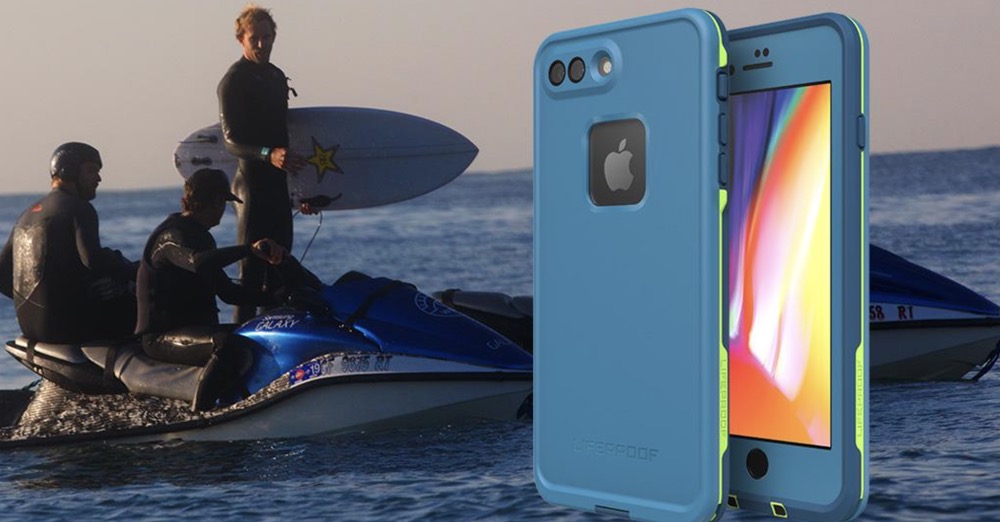Lifeproof cases are accessories made for outdoor use electronics, including phones and tablets. These products are made to resist water and falls in the roughest terrain. Still, your Lifeproof case does accumulate grime and wear down over time. It needs to be cleaned and tested to stay viable. To clean out your case and keep your device protected, test the seal in water, wash the case with soap and water, and wipe down the phone or tablet with a microfiber cloth.
Cleaning the Exterior
Wipe small stains off with a cloth.
During daily use, you won’t want to do a deep cleaning every time your case accumulates dirt or dust. In these cases, use a soft cloth. Get the cloth damp with warm water then use it to wipe off the surface debris.
- Don’t clean with rough pads or brushes. These scrape the cases.
Rinse off dirty water.
Immediately after exposing the case to non-fresh water, including soap, chlorine-treated pool water, or seawater, return the case to a faucet. Use cool or lukewarm water to rinse the entire case so the non-fresh water does not abrade it. Rinsing this way protects the case when you don’t have time to clean with soap.
- Unless you plan on cleaning out the inside of the case and are sure the seal is secure, you do not need to remove your phone.
Wash with soap.
First, ensure all the ports are closed. Apply a mild dish soap and rinse it off under warm water in a sink. Perform this deeper cleaning whenever you see deeper stains that don’t come off with rinsing or at least every three months when you are supposed to perform a water seal test.
- Never clean with bleach or abrasive cleaners or polishes.
Dry the case.
Shake off excess moisture. For speedier drying, gently wipe the case with a soft cloth. Otherwise, leave the case out on a paper towel away from direct sunlight. Only use a microfiber cloth on the screen so the screen doesn’t get scratched.
Washing the Interior
Remove your phone.
Use the plastic pick that came with the Lifeproof case to wedge apart the halves from one of the corners. If you don’t have the pick on hand, use a coin. Place your phone far away so it doesn’t get wet.
Rinse with soap and water.
Again, apply a mild dish soap directly to the case. Spread it around with your finger or a cloth. With the empty case, place it in a lukewarm water bath or rinse it under the faucet. Make sure to get loose any dirt in the corners or in the ports.
Dry the case halves.
Shake off as much moisture as you can, then wipe it down with a soft cloth. For slower air drying, leave the halves out on paper towels away from direct sunlight. Avoid using fluffy towels, as these can introduce lint that affects the phone or the seal.
Testing the Water Seal
Remove your phone.
The seal test should be done before water exposure, after a bad fall, or every three months otherwise. This tests the case’s ability to keep out water, so if you haven’t removed your phone already to clean the case, do it now.
Submerge the case.
Make sure the case is closed, including the charge port. Hold the case underwater for up to 30 minutes. You can place something heavy on top of the case in order to keep it underwater.
Wipe off the outside.
Once the 30 minutes are up, clean off the outside of the case only. Use a soft cloth. Make sure all the water is gone so none of it gets inside.
Open up the case.
Use the plastic key or a coin to wedge open the corner of the case. Separate the halves of the case. Check them thoroughly for any sign of leaks. If the case is completely dry, you are free to put your phone back inside.
Sealing the Phone
Check the ports.
The charge port, camera ring, and headphone jack on both the case and phone accumulate dirt. Whenever you open them or notice dirt, it is a good idea to use a soft cloth. Remove the dirt as soon as you notice it to prevent it from spreading inside the phone or case.
Wipe your phone’s surfaces.
Lifeproof cases come with a microfiber cloth, but these can also be found at a general retailer. Only use cloth that is good for eyeglasses, jewelry, and electronics, as these won’t scratch the screen. Make sure the cloth removes all dirt and dust before you put your phone or tablet in the case.
Close the case.
Lay your device in the bottom of the case. Place the top part of the case over it, then run your finger around the edges to snap it in place. Before you finish, check to see if you got all the dirt, dust, and lint. Any spots you miss will be amplified on the screen or stick in the charge and camera ports. Undo the case and remove the debris.
